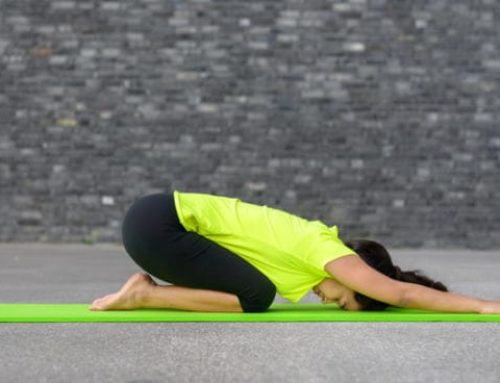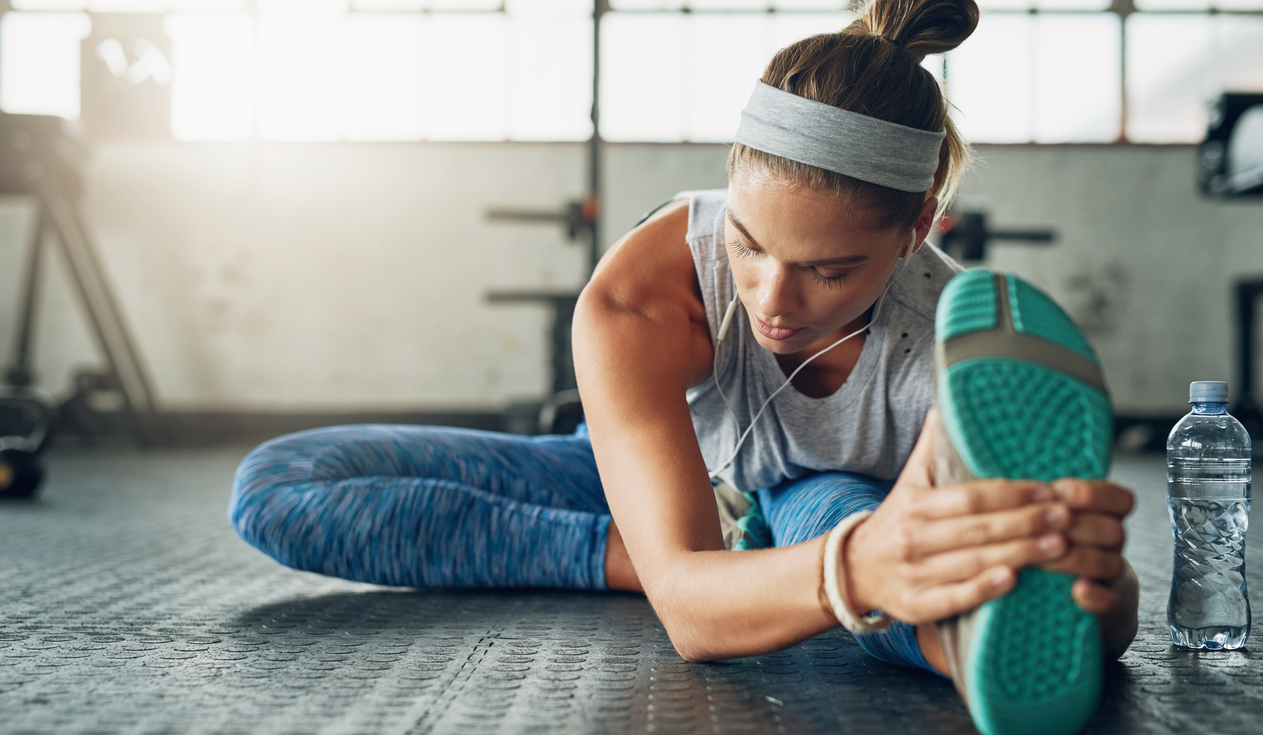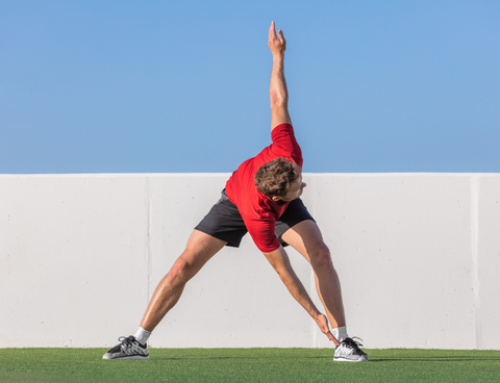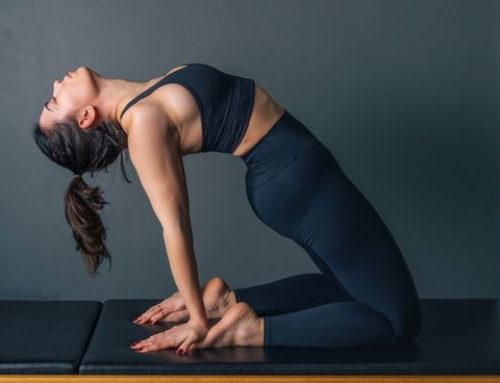Hate Stretching? Try This.
It’s time to throw out those old-style textbook definition stretches. Most young athletes today struggle to even touch their toes. The boredom of stretching and the popular “it’s a waste of time” excuse are major reasons why few people stick with it. Plus, some widely held principles of flexibility training don’t work and can actually lead to a pulled muscle.
No matter how anxious you are to train or compete, you must resist the urge to skip stretching before and after your activity. You can do more harm than good if you don’t bring your body up to speed. Cooling down after a workout is just as important as warming up in reducing injury risk. It initiates recovery and returns the body to its pre-workout state.
By tossing out the “old book” on stretching, you’ll reduce your risk of injury, improve your overall athleticism, and have an easier time tying your shoes. This breakthrough “new school” plan will improve your flexibility, boost your performance and prevent injuries.
Static Stretching
Examples of static stretches are movements where you lean forward until you feel a slight discomfort in the target muscle. Then you stretch the muscle by holding that position for a certain amount of time.
Static stretching before a workout might be the worst of all strategies, because it forces the target muscle to relax, temporarily making it weaker. This results in imbalances in strength between opposing muscle groups. For example, stretching your quadriceps causes them to become significantly weaker than your hamstrings. So you’re more susceptible to muscle strains, pulls and tears in the short term. Never perform static stretching before you work out or play sports. Static stretching also reduces blood flow to your muscles, which limits your capacity to generate force.
Static stretching does have value. That’s because improving your “passive” flexibility through static stretches is beneficial for everyday movements such as bending, kneeling, and squatting. Stretch at least 10 minutes a day, every day. If you stretch less frequently, you will lose any gains in flexibility. There’s no need to “warm up” before stretching. (Stretch a minute.) You can stretch at work, while you’re watching TV or even while cooking. Flexibility can increase with a static stretch held for as little as five seconds; but you get the best gains by holding it between 15 and 30 seconds. Perform just one stretch for each tight muscle, because most improvements in flexibility are made on the first stretch.
Quadriceps
Stand two feet in front of a bench or chair. Place your foot on the bench or chair behind you and push your hips forward as your knee drops toward the ground. Keep your torso upright.
Pectorals
Stand tall and place your arm against a doorframe or wall, then move your shoulder forward.
Hamstrings
Place your foot on a sturdy box or bench and lean forward from the hips until you feel a stretch.
Dynamic Stretching
The opposite of static stretches, dynamic stretches involve quickly moving a muscle in and out of a stretched position. Body positioning and movement speed lead to improvements in flexibility. If you only do static stretching, you will primarily boost your flexibility in that exact posture while moving at a slow speed. This will have limited carryover to the flexibility you need for sports and weight training, which require the muscles to stretch at fast speeds in various body positions. Essentially, dynamic stretching improves your “active” flexibility, the kind you need for every sport. That’s why dynamic stretching is a necessary component of any training program.
Dynamic stretching also increases blood flow, strength and power production, making it the ideal warm-up for any activity.
Performing both dynamic and static stretches will transfer flexibility improvements from one to the other. Perform five to eight bodyweight exercises or calisthenics at a slow tempo and in a comfortable range of motion. Increase your range and speed with each repetition until you’re performing the movement quickly from start to finish.
Examples of Dynamic Stretching
- Jumping Jacks
- Arm Circles
- Trunk Rotations
- Front Lunges
- Side Lunges
- High Knees
- Bodyweight Squats
See STACK’s round-up on Dynamic vs. Static Stretching
RECOMMENDED FOR YOU
MOST POPULAR
Hate Stretching? Try This.
It’s time to throw out those old-style textbook definition stretches. Most young athletes today struggle to even touch their toes. The boredom of stretching and the popular “it’s a waste of time” excuse are major reasons why few people stick with it. Plus, some widely held principles of flexibility training don’t work and can actually lead to a pulled muscle.
No matter how anxious you are to train or compete, you must resist the urge to skip stretching before and after your activity. You can do more harm than good if you don’t bring your body up to speed. Cooling down after a workout is just as important as warming up in reducing injury risk. It initiates recovery and returns the body to its pre-workout state.
By tossing out the “old book” on stretching, you’ll reduce your risk of injury, improve your overall athleticism, and have an easier time tying your shoes. This breakthrough “new school” plan will improve your flexibility, boost your performance and prevent injuries.
Static Stretching
Examples of static stretches are movements where you lean forward until you feel a slight discomfort in the target muscle. Then you stretch the muscle by holding that position for a certain amount of time.
Static stretching before a workout might be the worst of all strategies, because it forces the target muscle to relax, temporarily making it weaker. This results in imbalances in strength between opposing muscle groups. For example, stretching your quadriceps causes them to become significantly weaker than your hamstrings. So you’re more susceptible to muscle strains, pulls and tears in the short term. Never perform static stretching before you work out or play sports. Static stretching also reduces blood flow to your muscles, which limits your capacity to generate force.
Static stretching does have value. That’s because improving your “passive” flexibility through static stretches is beneficial for everyday movements such as bending, kneeling, and squatting. Stretch at least 10 minutes a day, every day. If you stretch less frequently, you will lose any gains in flexibility. There’s no need to “warm up” before stretching. (Stretch a minute.) You can stretch at work, while you’re watching TV or even while cooking. Flexibility can increase with a static stretch held for as little as five seconds; but you get the best gains by holding it between 15 and 30 seconds. Perform just one stretch for each tight muscle, because most improvements in flexibility are made on the first stretch.
Quadriceps
Stand two feet in front of a bench or chair. Place your foot on the bench or chair behind you and push your hips forward as your knee drops toward the ground. Keep your torso upright.
Pectorals
Stand tall and place your arm against a doorframe or wall, then move your shoulder forward.
Hamstrings
Place your foot on a sturdy box or bench and lean forward from the hips until you feel a stretch.
Dynamic Stretching
The opposite of static stretches, dynamic stretches involve quickly moving a muscle in and out of a stretched position. Body positioning and movement speed lead to improvements in flexibility. If you only do static stretching, you will primarily boost your flexibility in that exact posture while moving at a slow speed. This will have limited carryover to the flexibility you need for sports and weight training, which require the muscles to stretch at fast speeds in various body positions. Essentially, dynamic stretching improves your “active” flexibility, the kind you need for every sport. That’s why dynamic stretching is a necessary component of any training program.
Dynamic stretching also increases blood flow, strength and power production, making it the ideal warm-up for any activity.
Performing both dynamic and static stretches will transfer flexibility improvements from one to the other. Perform five to eight bodyweight exercises or calisthenics at a slow tempo and in a comfortable range of motion. Increase your range and speed with each repetition until you’re performing the movement quickly from start to finish.
Examples of Dynamic Stretching
- Jumping Jacks
- Arm Circles
- Trunk Rotations
- Front Lunges
- Side Lunges
- High Knees
- Bodyweight Squats
See STACK’s round-up on Dynamic vs. Static Stretching












